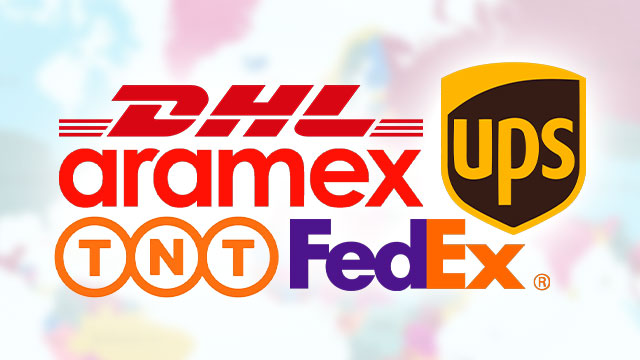Tracking Perishables_Ensuring Food Safety in Transit
Challenges in Monitoring Temperature-Sensitive Shipments
- Maintaining the Cold Chain
- Ensuring Proper Packaging
- Dealing with Delays and Disruptions
Solutions for Ensuring Food Safety in Transit
- Use of Temperature Monitoring Devices
- Implementing Good Distribution Practices (GDP)
- Partnering with Reliable Carriers and Suppliers
Best Practices for Tracking Perishables
- Properly Labeling and Packaging Perishable Items
- Monitoring Temperature Throughout the Journey
- Having a Contingency Plan in Case of Temperature Excursions
In today’s fast-paced world, ensuring the safety of perishable goods during transit is more critical than ever, especially with the rise of foodborne illnesses.
From fresh produce to dairy products, maintaining food quality hinges on effective temperature control and proper handling, utilizing innovative cold chain logistics.
This article explores the concept of perishables, highlights the importance of food safety in transit, and outlines the challenges involved in monitoring temperature-sensitive shipments, including temperature excursions that can arise.
It also shares actionable solutions and best practices to help navigate this complex landscape, ensuring that products arrive safely and in top condition.
What Are Perishables?
Perishables refer to items that have a limited shelf life due to their sensitivity to temperature, moisture, and other environmental factors. This category includes fresh produce such as fruits and vegetables, frozen foods like fish and meat, and items like coffee beans that require specific storage conditions to maintain quality and safety.
Understanding what constitutes perishables is crucial for businesses engaged in cold chain logistics and food safety practices, particularly in relation to compliance regulations.
These items play a vital role in our daily lives, not only providing nutritional value but also supporting local economies and global trade, thus contributing to food waste reduction efforts. Effective monitoring of perishables is essential to ensure they remain safe for consumption and retain their freshness. This includes various types:
- Fruits and Vegetables
- Dairy Products
- Meat and Seafood
- Frozen Foods
- Prepared Meals
By implementing state-of-the-art tracking, including GPS tracking and temperature control systems, businesses can minimize spoilage, thereby significantly reducing food waste and enhancing sustainability efforts.
As consumer awareness grows regarding food quality, maintaining freshness becomes increasingly important, reinforcing the need for robust supply chain practices.
Why Is Food Safety Important in Transit?
Food safety in transit is critical as it ensures that perishables, including fresh produce and frozen foods, reach their destination without compromising quality, which can lead to foodborne illnesses and potential FDA recalls, risking shipment integrity. Effective monitoring of temperature excursions during transit helps logistics providers maintain shipment integrity and comply with regulations set by entities like the FDA and USDA.Temperature fluctuations during transportation can create significant risks to food safety, increasing the likelihood of spoilage and contamination. When products exceed the recommended temperature ranges, harmful bacteria can proliferate, posing serious health risks to consumers, often resulting in FDA recalls. Therefore, it is essential for logistics providers to implement robust temperature control measures, including:
- Utilizing insulated shipping containers, along with cloud-based software, can enhance tracking capabilities.
- Employing real-time temperature monitoring technology, such as temperature data loggers and Tive trackers, is crucial in this process.
- Training staff on food safety protocols is essential, especially in organizations like Chipotle and Alpine Fresh.
By prioritizing these aspects, stakeholders can mitigate the implications of temperature variances, ensuring that all food products remain safe for consumption. Ultimately, adherence to stringent safety standards, as outlined by the FSMA and USDA, is vital for preserving public health and maintaining consumer trust in the food supply chain.
Food safety in transportation is, therefore, an ongoing commitment that cannot be overlooked.
1. Challenges in Monitoring Temperature-Sensitive Shipments
Monitoring temperature-sensitive shipments presents several challenges that logistics providers must navigate to ensure the integrity of perishables throughout the cold chain logistics process. These challenges include maintaining the cold chain, ensuring proper packaging, and mitigating delays and disruptions that can compromise supply chain visibility and lead to food waste. Each of these challenges requires strategic logistics solutions to monitor and manage effectively.Maintaining the Cold Chain
Maintaining the cold chain is vital for temperature-sensitive shipments, ensuring that perishables such as frozen fish and fresh fruit are kept at optimal temperatures throughout their journey, and utilizing tools like temperature data loggers and IoT technology is essential for preserving shipment integrity. These technologies provide real-time tracking and alerts, allowing logistics providers to respond promptly to any temperature excursions that may occur.In the world of logistics, the integrity of goods during transit can significantly impact both profitability and food safety, making supply chain visibility critical. The adoption of modern technologies not only enhances operational efficiency but also assures consumers that what they receive is of the highest quality.
With real-time tracking and monitoring through IoT solutions, logistics companies are better equipped to:
- Quickly identify temperature deviations that could lead to spoilage and potential foodborne illnesses.
- Ensure compliance with global food safety standards set forth by the FDA and USDA.
- Reduce waste by enabling timely interventions.
By leveraging IoT capabilities, including Tive and other tracking technologies, organizations can automate alerts, giving them the power to maintain stringent temperature controls. This proactive approach not only safeguards perishable items but also fortifies overall supply chain resilience, creating a win-win scenario for both providers and consumers alike.
Ensuring Proper Packaging
Ensuring proper packaging for perishable foods, including prepared meals and coffee beans, is crucial for maintaining their safety and quality during transit, especially in the context of strict compliance regulations enforced by authorities like the FDA and USDA. Effective packaging helps to protect against temperature fluctuations and physical shocks, thus enhancing the overall cold chain logistics process.Different types of packaging serve distinct roles in safeguarding perishables, particularly frozen foods and fresh produce, ranging from vacuum-sealed bags to insulated boxes.
Temperature control is essential, and materials such as gel packs and dry ice can be employed to maintain ideal conditions. Compliance with regulations ensures that businesses are accountable for food safety standards and reduces the risk of spoilage.
- Vacuum Packaging: Extends shelf life by removing air.
- Insulated Containers: Prevents thermal exchange during transport.
- Eco-friendly Options: Align with sustainability goals while protecting products.
Logistics providers can implement best practices for packaging by conducting regular training sessions and audits, thereby minimizing risks associated with transportation and ensuring both the safety and integrity of the food products, which is crucial for compliance with FDA and USDA standards.
Dealing with Delays and Disruptions
Dealing with delays and disruptions in transit is a significant challenge for logistics providers, as these issues can lead to temperature excursions that jeopardize the integrity of perishables and result in considerable food waste, highlighting the need for robust logistics solutions. Achieving supply chain visibility through GPS trackers is essential for proactively addressing potential disruptions and implementing effective logistics solutions to minimize their impact.Such delays can stem from various sources, including unforeseen weather conditions, mechanical failures, or even regulatory hold-ups that require additional documentation, increasing the risk of FDA recalls. When food shipments are compromised, not only does it threaten food quality, but it can also pose serious health risks to consumers. To combat these challenges, logistics providers are increasingly adopting advanced tracking technologies, such as IoT-based systems and cloud-based software, for enhanced oversight.
- Utilizing real-time temperature monitoring tools helps ensure perishables stay within safe thresholds.
- Implementing robust communication channels among stakeholders can lead to quicker response times when issues arise.
- Investing in contingency plans, including alternative routing options, can further mitigate risks.
With the right strategies in place, including compliance with FSMA regulations, it's possible to sustain the flow of goods while protecting vital public health considerations.
2. Solutions for Ensuring Food Safety in Transit
To ensure food safety in transit, logistics providers can employ a combination of temperature monitoring devices, good distribution practices (GDP) such as Tive trackers, and partnerships with reliable carriers to maintain the integrity of perishables throughout the supply chain. These solutions help to mitigate risks associated with temperature excursions and enhance compliance with food safety regulations.Use of Temperature Monitoring Devices
The use of temperature monitoring devices, including temperature data loggers and IoT technology, is essential for ensuring food safety during transit, as they provide real-time tracking capabilities that allow logistics providers to respond immediately to any deviations in temperature. These devices, often powered by IoT technology, can significantly reduce the risks associated with temperature excursions and enhance shipment integrity.Temperature monitoring devices come in various forms, including data loggers, infrared thermometers, GPS trackers, and smart sensors. Each type has its unique functionality; for instance, data loggers record temperature over time, while infrared devices provide instant readings without contact.
- Real-time tracking allows immediate alerts to be sent to operators, paving the way for swift corrective actions.
- Implementing these technologies not only bolsters compliance with safety regulations but also increases consumer confidence in food products, especially from brands like Copeland and OBE Organics.
The integration of IoT into these systems, such as those offered by Tive, enables seamless communication between devices, ensuring that stakeholders can monitor and manage temperature conditions from anywhere. This connectivity profoundly enhances food safety, making it less vulnerable during transit and significantly reducing spoilage or contamination risks, ultimately supporting sustainability goals.
Implementing Good Distribution Practices (GDP)
Implementing Good Distribution Practices (GDP) is crucial for logistics providers to ensure food safety and maintain compliance with regulations set by the FDA and USDA. GDP encompasses a set of guidelines that help manage the storage and transportation of perishables, thus minimizing risks associated with temperature excursions.These guidelines focus on critical areas such as inventory management, personnel training, and vehicle sanitation to uphold quality throughout the supply chain. By adopting a systematic approach to logistics operations, businesses can safeguard their products from contamination and spoilage, which is essential for meeting consumer expectations and legal requirements, especially in light of potential FDA recalls that can occur without proper monitoring.
- Rigorous monitoring of temperature controls at every stage
- Regular audits and assessments
- Robust documentation practices
Partnering with Reliable Carriers and Suppliers
Partnering with reliable carriers and suppliers is a pivotal strategy for logistics providers aiming to uphold food safety and ensure the integrity of perishables throughout the cold chain logistics process. Utilizing technologies such as GPS trackers allows for enhanced visibility among partners like Chipotle and Alpine Fresh. Establishing strong relationships promotes accountability and enhances overall supply chain visibility, particularly when using IoT solutions to facilitate communication and tracking.Choosing the right carriers involves thorough evaluations based on their track record, compliance with safety regulations, and ability to maintain temperature controls, potentially using perishables monitoring technologies to ensure quality. Strong partnerships foster transparency, creating a detailed flow of information that is crucial during transportation.
Essential criteria for selection include:
- Regulatory compliance
- Experience in handling perishables
- Technological capabilities like Tive for monitoring conditions
Such collaborations ensure adherence to safety standards, resulting in higher customer satisfaction and reduced product loss. Open lines of communication enhance problem-solving capabilities, allowing both parties to swiftly address potential issues, thereby fortifying the integrity of the entire supply chain.
3. Best Practices for Tracking Perishables
Implementing best practices for tracking perishables is essential for logistics providers to maintain the quality and safety of temperature-sensitive shipments. This includes utilizing real-time tracking technologies, monitoring temperature throughout the journey, and having contingency plans in place to address potential temperature excursions effectively.Properly Labeling and Packaging Perishable Items
Properly labeling and packaging perishable items is crucial for ensuring food safety and effective perishables monitoring during transit. Clear labeling provides essential information regarding storage conditions and handling procedures, while appropriate packaging safeguards against temperature fluctuations. Advanced technologies like IoT can further enhance these processes.Implementing stringent guidelines for labeling and packaging helps facilitate traceability, allowing consumers and authorities to easily identify the product's origins and handling history. This transparency not only fosters trust but also enhances compliance with regulatory standards. Adhering to established protocols ensures that perishables are maintained at optimal temperatures, thus minimizing spoilage and foodborne illnesses, a critical factor in preventing FDA recalls.
- Utilizing color-coded labels for different types of perishables can quickly convey necessary storage temperatures, and the integration of shock monitoring can further ensure that products remain safe throughout the journey.
- Incorporating QR codes can provide additional information directly to end-users, reinforcing food safety practices and offering insights into the use of GPS trackers embedded in packaging to enhance traceability.
By focusing on these elements, stakeholders can contribute to a safer food supply chain, ensuring the integrity of products from the point of origin to the consumer’s table, especially when employing IoT technology.
Monitoring Temperature Throughout the Journey
Monitoring temperature throughout the journey of perishable shipments is vital for ensuring compliance with food safety standards and maintaining the integrity of cold chain logistics, particularly through the use of real-time tracking technologies and GPS tracking.
Utilizing temperature data loggers and GPS tracking technology enables logistics providers to identify any deviations promptly. Continuous monitoring is essential as it not only prevents food spoilage but also ensures adherence to safety regulations mandated by health authorities, thus preventing costly FDA recalls.
- Temperature data loggers, along with Tive trackers, capture consistent measurements at designated intervals, offering comprehensive insights into shipment conditions.
- Real-time alerts notify stakeholders immediately of any temperature fluctuations, allowing for quick remedial actions, ensuring compliance with industry standards set by the USDA.
- These advanced technologies, including IoT technology, also simplify compliance reporting, showcasing that proper handling procedures have been maintained throughout transit.
In essence, by employing these methods, logistics firms can significantly reduce risks associated with spoilage, ultimately protecting public health and enhancing their reputation in the industry.
Having a Contingency Plan in Case of Temperature Excursions
Having a contingency plan in place to address temperature excursions is essential for logistics providers to mitigate risks associated with food waste and ensure the safety of perishables. This plan should outline immediate actions to be taken in case of deviations and include effective logistics solutions for maintaining cold chain integrity, such as backup systems using Copeland refrigeration.An effective contingency plan encompasses several critical components, including the use of IoT devices to enhance monitoring capabilities.
- Assessment: Continuously monitor and evaluate the temperature control systems to identify potential weaknesses.
- Response Protocols: Develop clear protocols for staff to follow during an excursion, specifying who should act, how to communicate issues, and the necessary steps to rectify the situation.
- Equipment Options: Ensure access to backup refrigeration units or coolers that can be deployed quickly in case of failure.
- Training: Conduct regular training sessions for employees to familiarize them with the protocol to uphold food safety standards.
- Documentation: Maintain meticulous records of temperature logs and excursion incidents to inform future improvements.
By integrating these elements, logistics providers can fortify their operations, minimizing risks and enhancing food safety significantly, particularly through partnerships with companies like OBE Organics for best practices.
4. Conclusion: Ensuring Food Safety in Transit is Essential
Ensuring food safety in transit is essential for the integrity of perishables and the overall success of logistics operations. By employing effective perishables monitoring techniques, including GPS trackers and Tive, utilizing advanced logistics solutions, and maintaining supply chain visibility, businesses can significantly reduce the risks associated with temperature excursions and enhance consumer trust in their products.Food safety has become a paramount concern in today’s fast-paced market, as consumers demand not just quality but also accountability in the supply chain. Without rigorous monitoring through technologies such as IoT, perishable items are vulnerable to spoilage, which could lead to significant financial losses for retailers and a potential health crisis for consumers.
- Utilizing real-time tracking technology such as Tive and GPS tracking ensures optimal conditions for sensitive goods.
- Regular training for staff on food safety standards can further mitigate risks, especially when they are familiar with IoT technology.
- Engaging in partnerships with reliable logistics providers like Chipotle is crucial for compliance and efficiency.
Businesses adopting these solutions not only uphold their reputations but also reinforce the trust of their clientele by utilizing advanced technologies such as shock monitoring to ensure safety. As the industry evolves, committing to best practices is vital for long-term sustainability.







